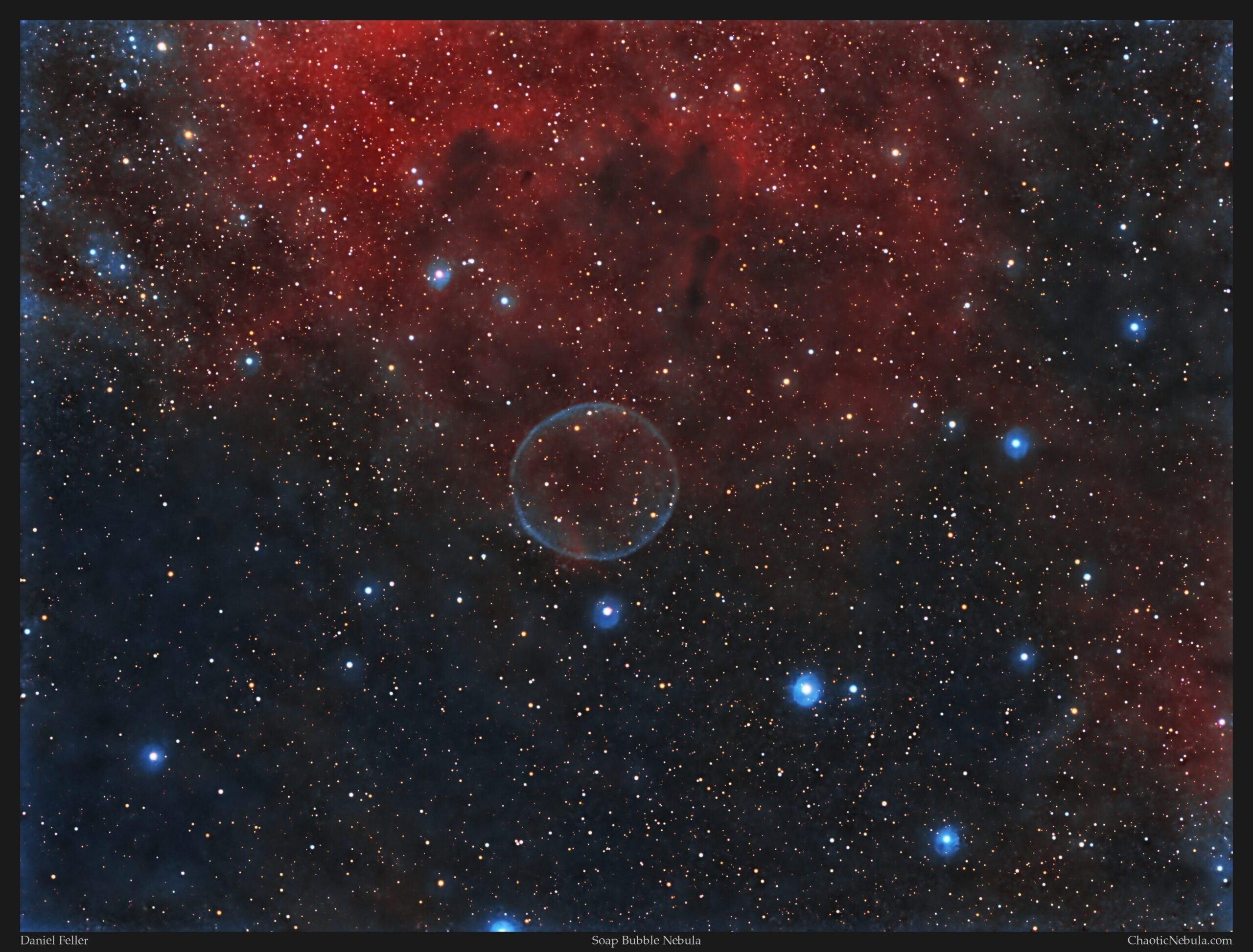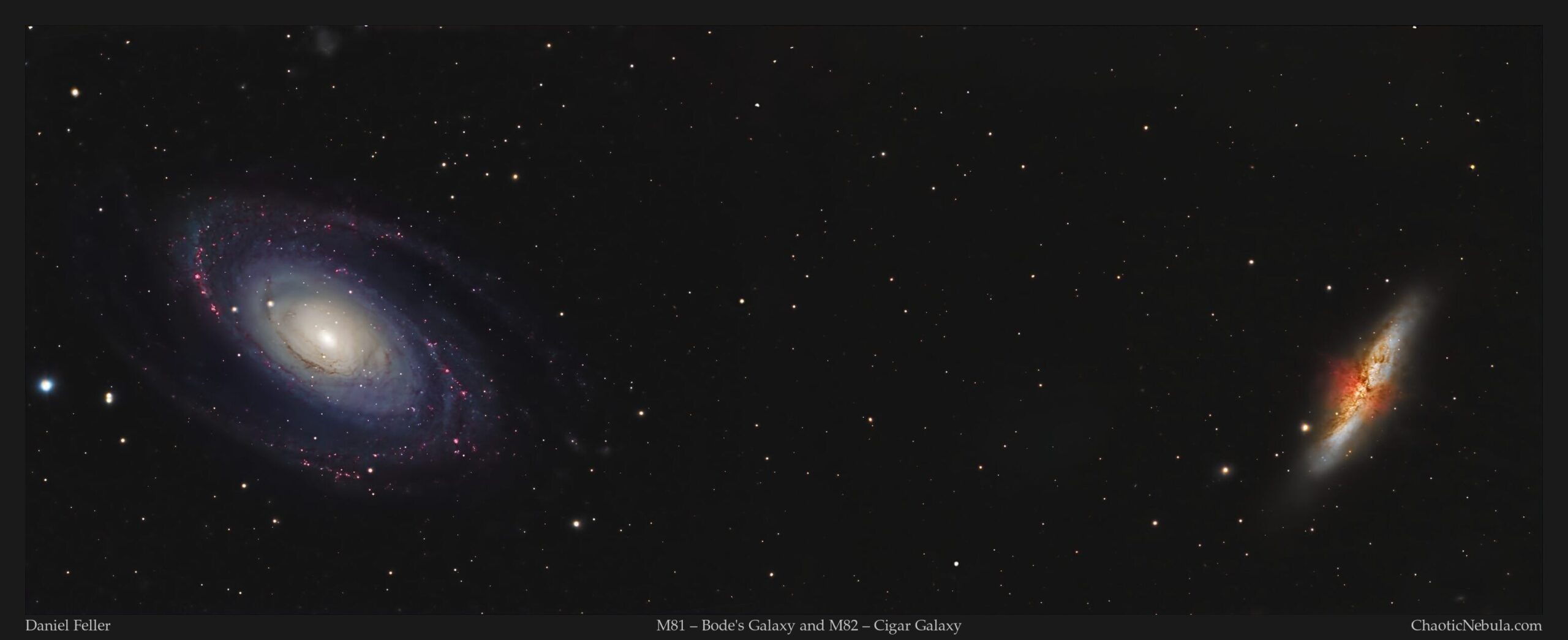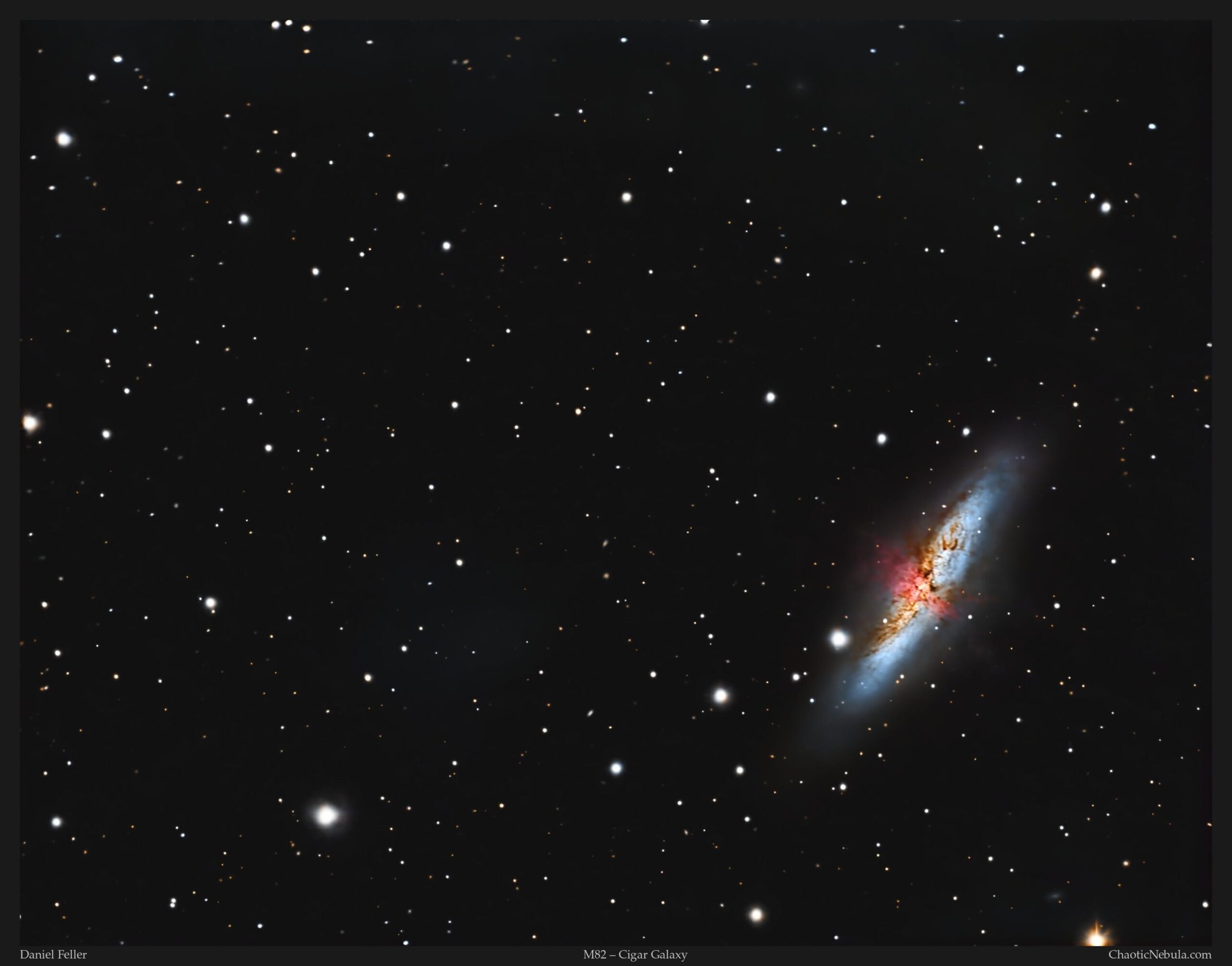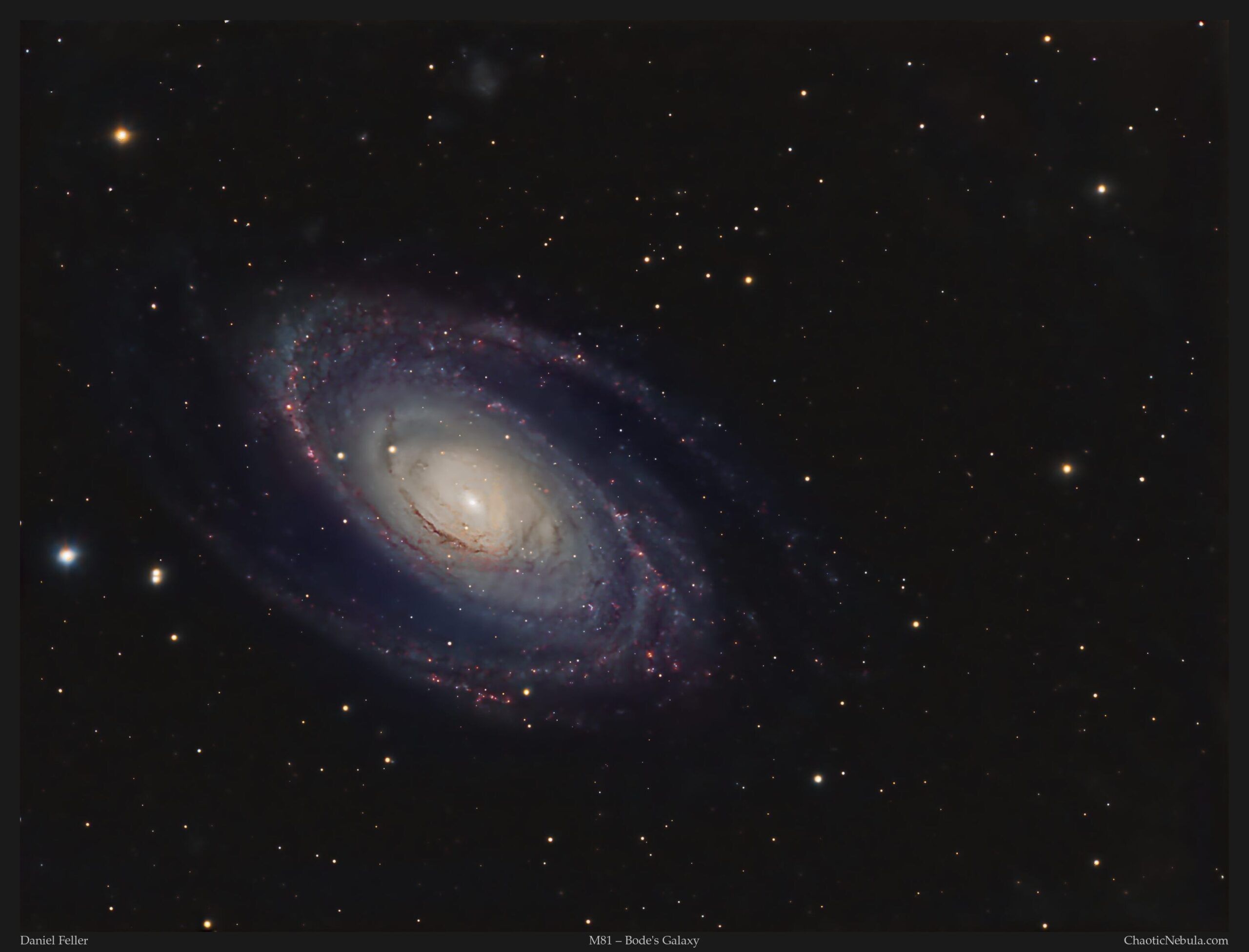The Soap Bubble Nebula: A Planetary Nebula in Cygnus
Located about 4,700 light-years away in the constellation Cygnus, the Soap Bubble Nebula (not to be confused with NGC 7635 – The Bubble Nebula) is a fascinating and elusive structure within the larger star-forming region surrounding the Crescent Nebula. This faint and delicate nebula gets its name from its nearly spherical shape, resembling a cosmic soap bubble floating in space.
The Soap Bubble Nebula is the result of a stellar wind from a massive star, WR 136, which is also responsible for the Crescent Nebula nearby. This hot, young Wolf-Rayet star has been shedding its outer layers of gas and dust for millions of years, creating a bubble of ionized gas and dust that expands outward into space. The intense radiation from WR 136 lights up the surrounding gas, giving the nebula its faint, glowing edges.
What makes the Soap Bubble Nebula intriguing is its relatively small size and its dim, ghostly glow. Despite being a part of the more famous Crescent Nebula complex, the Soap Bubble remains a challenge to observe, requiring long exposures and advanced imaging techniques to capture its faint structure.
(more…)


